Photos of the Moon with RX10 M3 - December 20, 2018
December 20, 2018 (1) | December 20, 2018 (2) | Comparison Clear Image Zoom versus Photoshop | Conclusions
On this page I present photos of the moon that I took on December 20, 2018 using the Sony RX10 M3 with either optical zoom or Clear Image Zoom.
December 20, 2018: Moon Photos with Sony RX10 M 3 - Attempt 1
The following photos were taken freehand with program automatic (P mode) and ISO 800. Exposure compensation was set to EV-3 . This was, however, not sufficient for shooting with 600 mm optical zoom and many photos were overexposed. In addition, the details show strong artifacts because of the high ISO value. This also means that it is no longer possible to achieve a reasonable sharpness by sharpening the photos in post-processing. All in all, this experiment showed that this was not the way to go for...
All the photos were cropped and scaled down to the same size. The large versions (links) open in a new window and demonstrate the 1:1 look. Clicking a photo opens this in double size in a new window or tab.
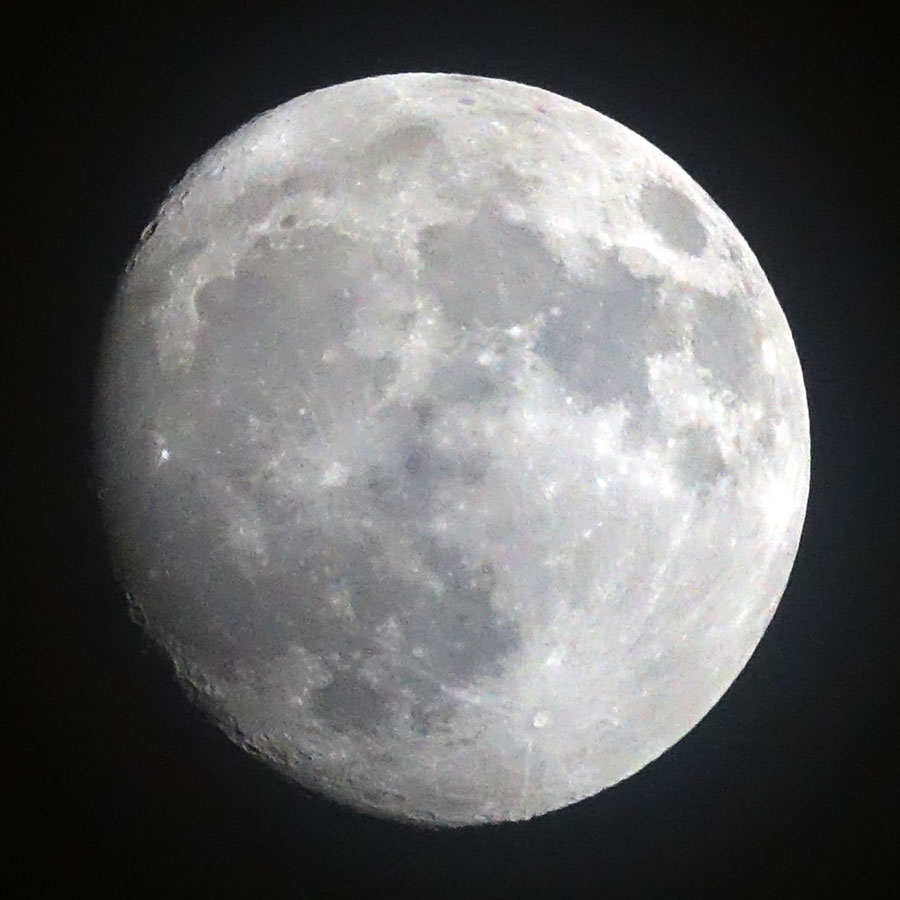 |
 |
|
2000 pixels - Clear Image Zoom, 1200 mm |
|
1000 pixels - optical zoom, 600 mm |
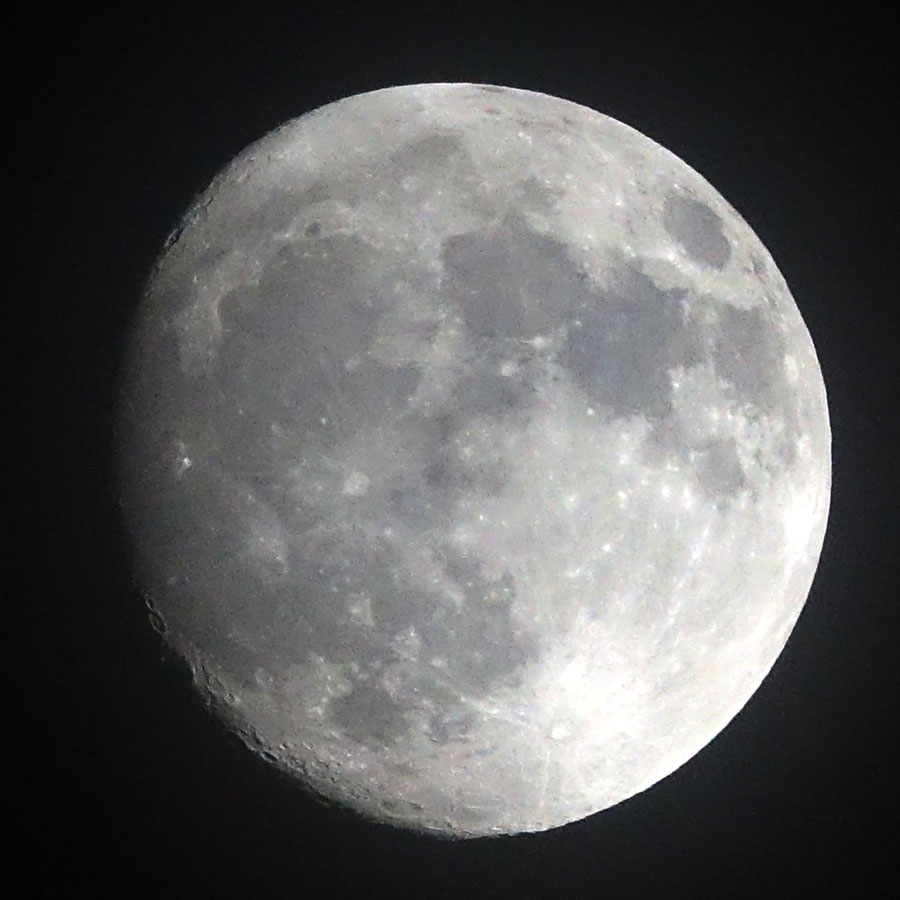 |
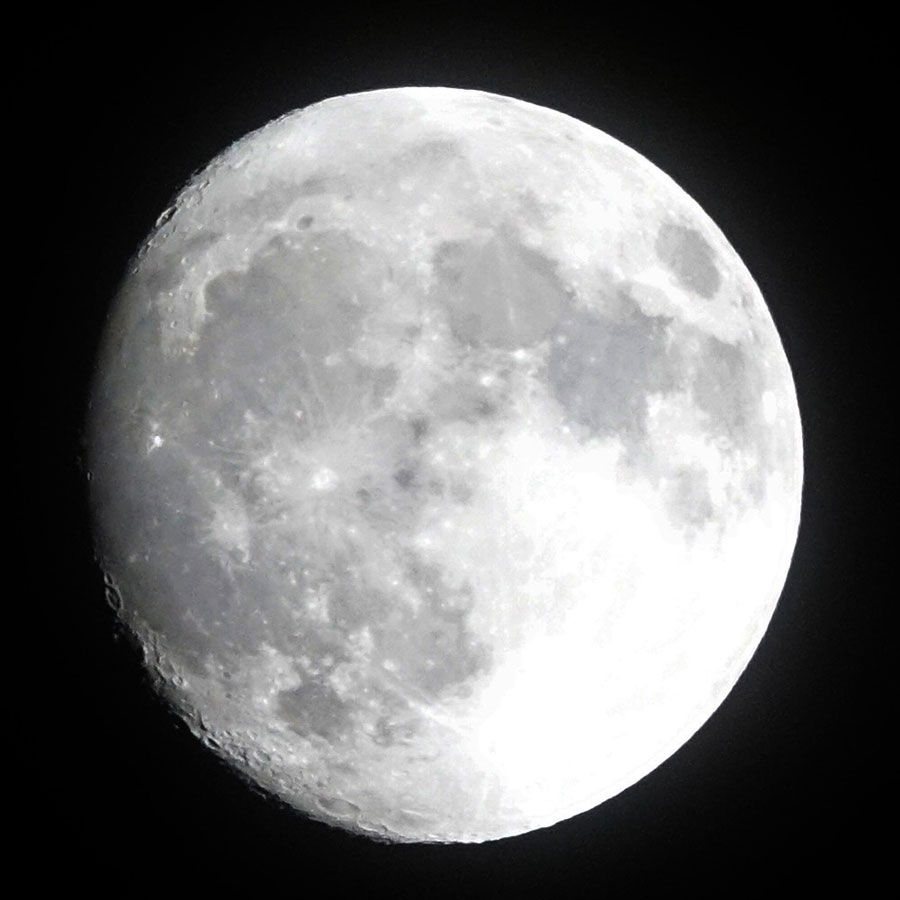 |
|
2000 pixels - Clear Image Zoom, 1200 mm |
|
1000 pixels - optical zoom, 600 mm |
December 20, 2018: Moon Photos with Sony RX10 M3 - Attempt 2
I skip a subsequent attempt with ISO 400 here and go directly to the attempt with ISO 200 in the hope of fewer artifacts thanks to a lower ISO value. Especially if you download the large versions, you can see the improvements. In addition, I used spot metering for the optical zoom for the exposure, which is not possible with Clear Image Zoom (only "large field" metering).
Note: A further test should be performed with ISO 100 on a tripod and with a cable release. The former to determine what the best possible image quality looks like for such photos, the latter to prevent camera shake due to the longer exposure times due to the low ISO value.
All the photos were cropped and scaled down to the same size. The large versions (links) open in a new window and demonstrate the 1:1 look. Clicking a photo opens this in double size in a new window or tab.
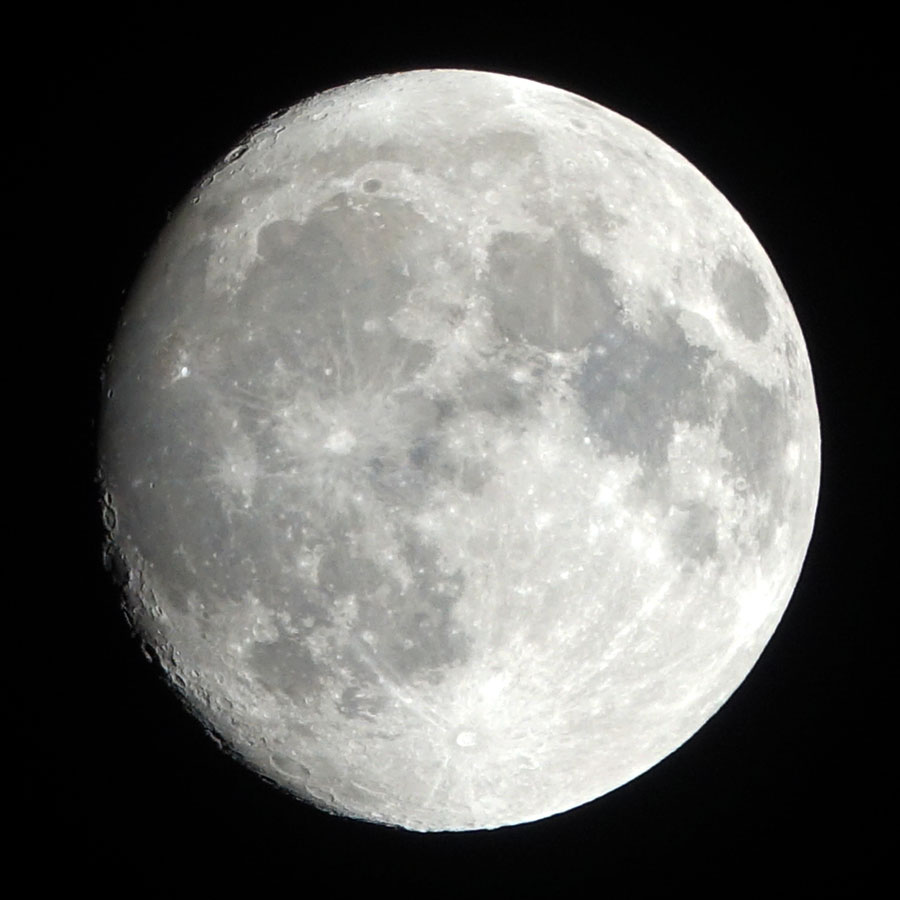 |
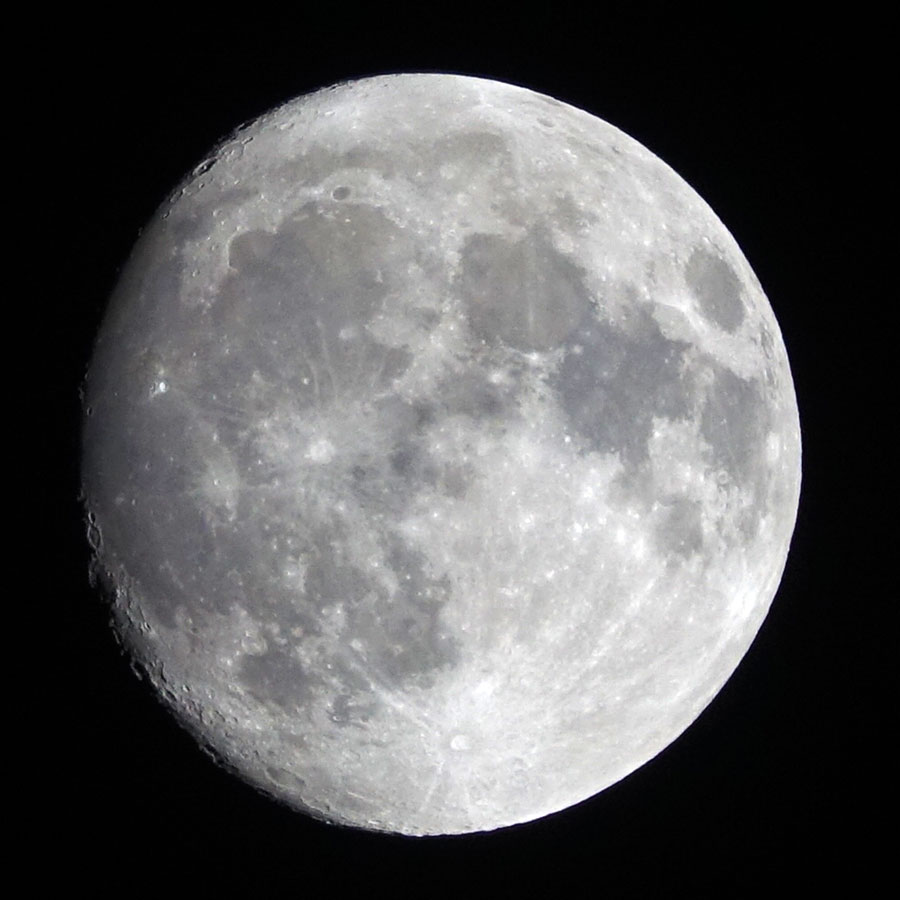 |
|
2000 Pixel - Clear Image Zoom, 1200 mm |
|
1000 Pixel - optical zoom, 600 mm |
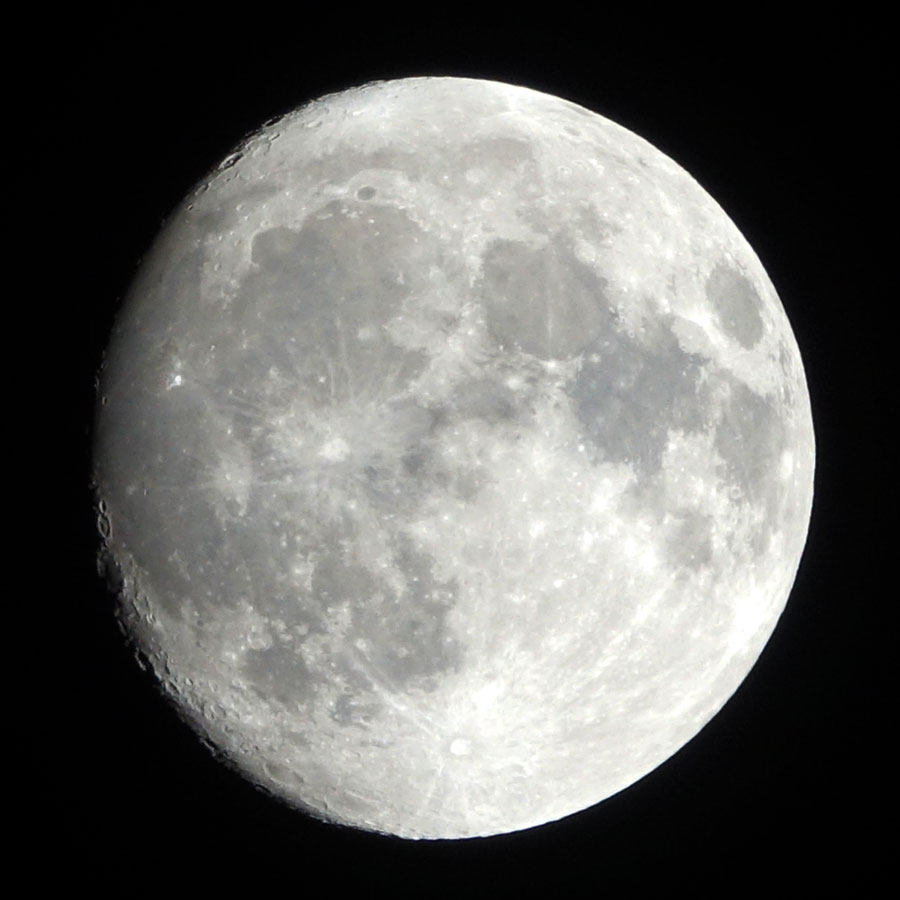 |
 |
|
2000 Pixel - Clear Image Zoom, 1200 mm |
|
1000 Pixel - optical zoom, 600 mm |
 |
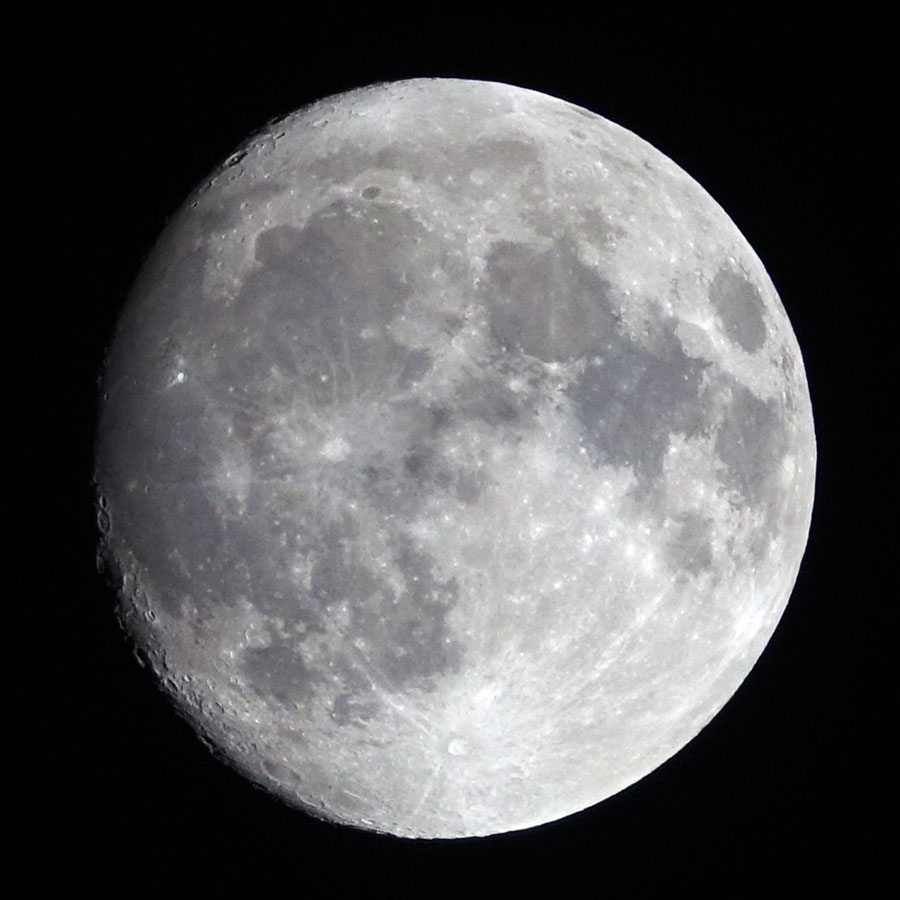 |
|
2000 Pixel - Clear Image Zoom, 1200 mm |
|
1000 Pixel - optical zoom, 600 mm |
Comparison Clear Image Zoom versus Photoshop
Photos of the moon taken with Clear Image Zoom, that is, with an equivalent focal length of 1200 mm, let the moon already appear "really large." But actually they do not show more details than pictures taken with maximum optical zoom. And so the question arises whether the use of the Clear Image Zoom makes any sense at all and how images taken with it look compared to images that were upscaled to 200% in Photoshop or a in similar image processing program.
For an accurate assessment of this question, the large version (1:1) must be taken into account. All the photos were cropped and scaled down to the same size. The large versions (links) open in a new window and demonstrate the 1:1 look. Clicking a photo opens this in double size in a new window or tab.
 |
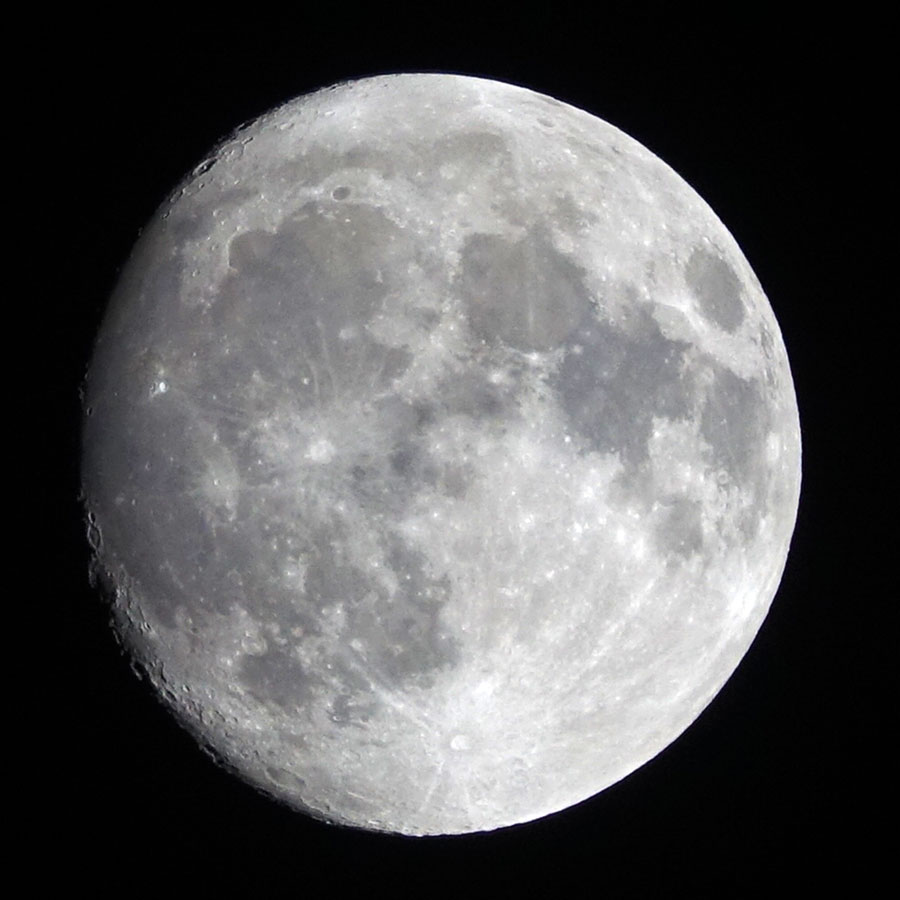 |
|
2000 Pixel - Clear Image Zoom, 1200 mm |
|
2000 Pixel - optical zoom, 600 mm |
 |
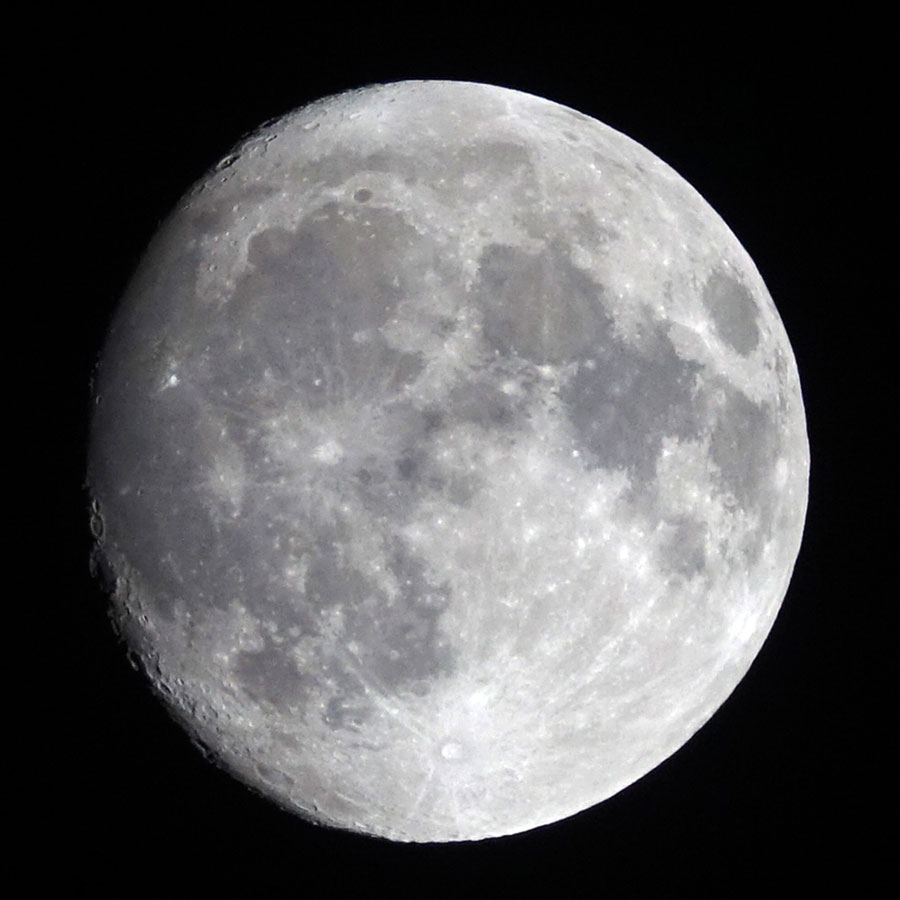 |
|
2000 Pixel - Clear Image Zoom, 1200 mm |
|
2000 Pixel - optical zoom, 600 mm |
 |
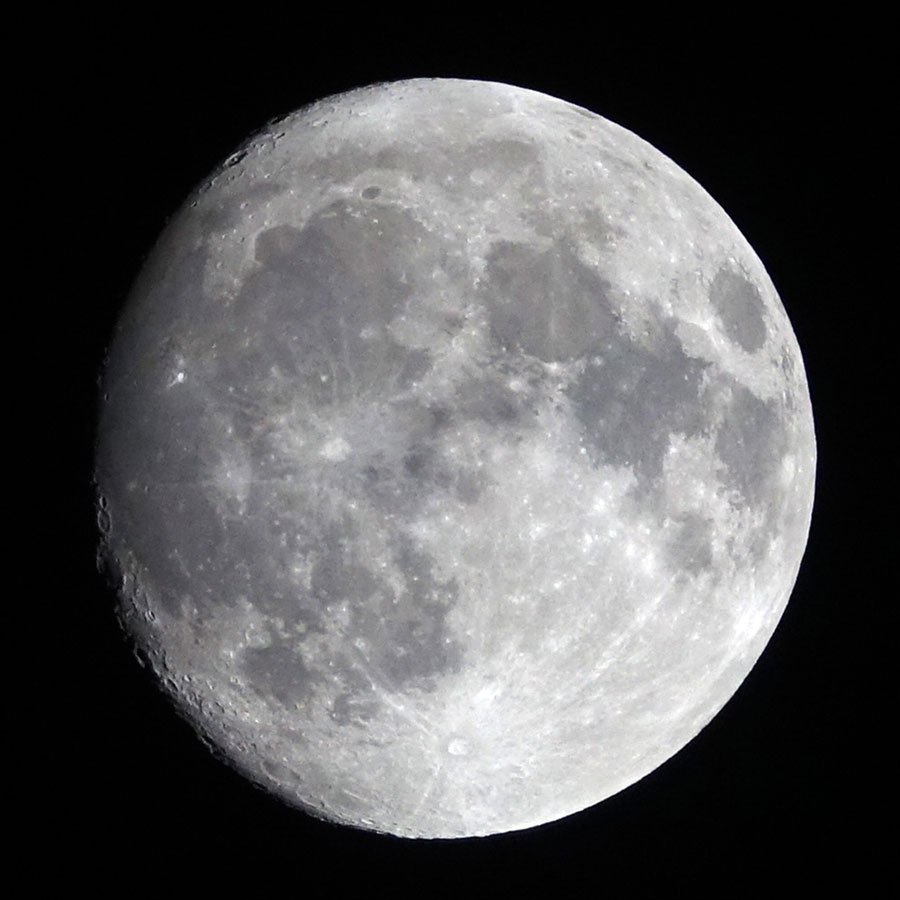 |
|
2000 Pixel - Clear Image Zoom, 1200 mm |
|
2000 Pixel - optical zoom, 600 mm |
To make the comparison a bit easier I created 1:1 sections from the above photos and put them side by side (the positions correspond to the photos above):
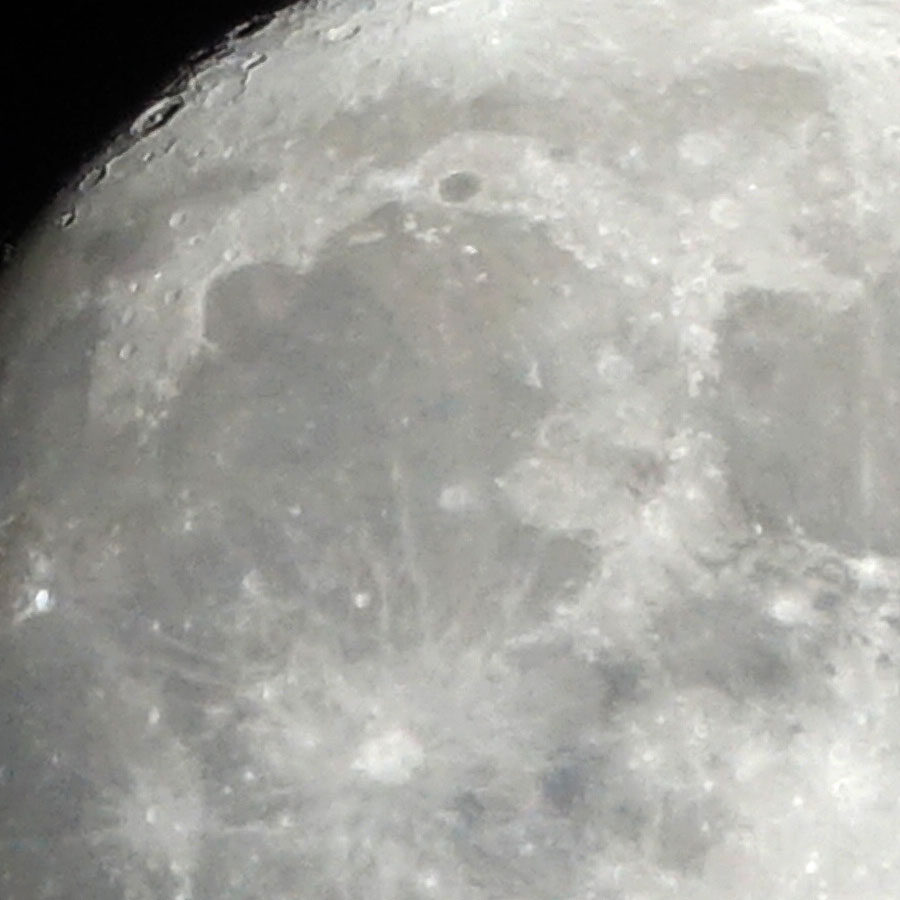 |
 |
|
2000 Pixel - Clear Image Zoom, 1200 mm |
|
2000 Pixel - optical zoom, 600 mm |
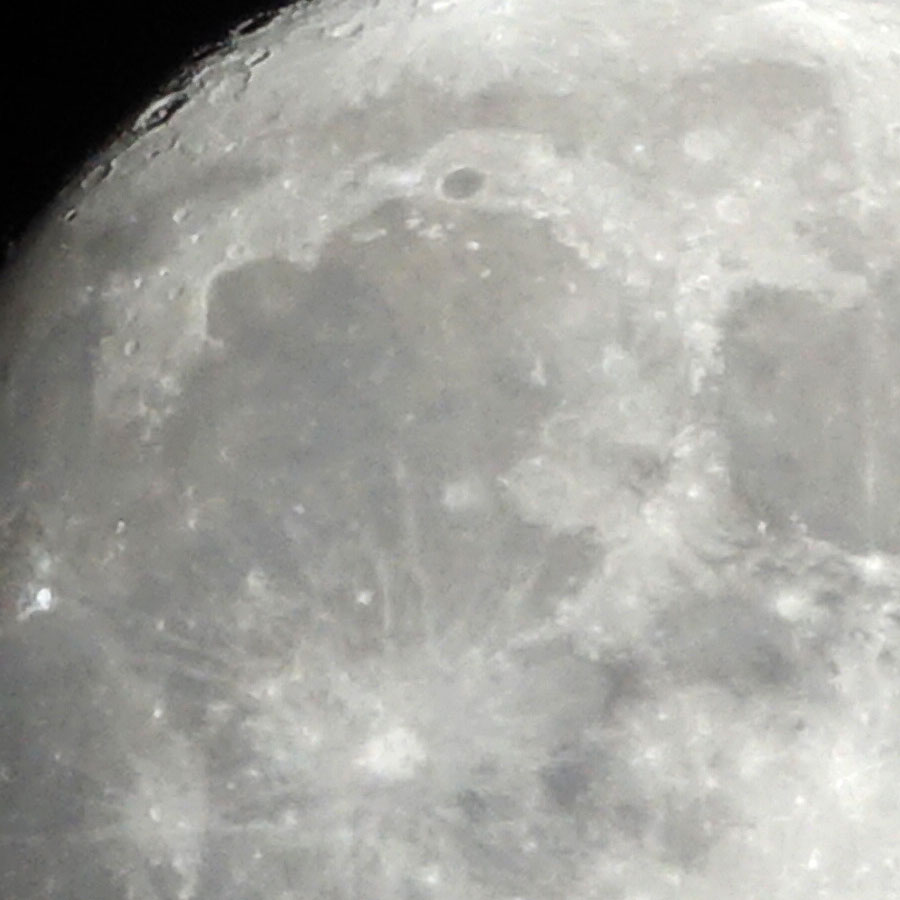 |
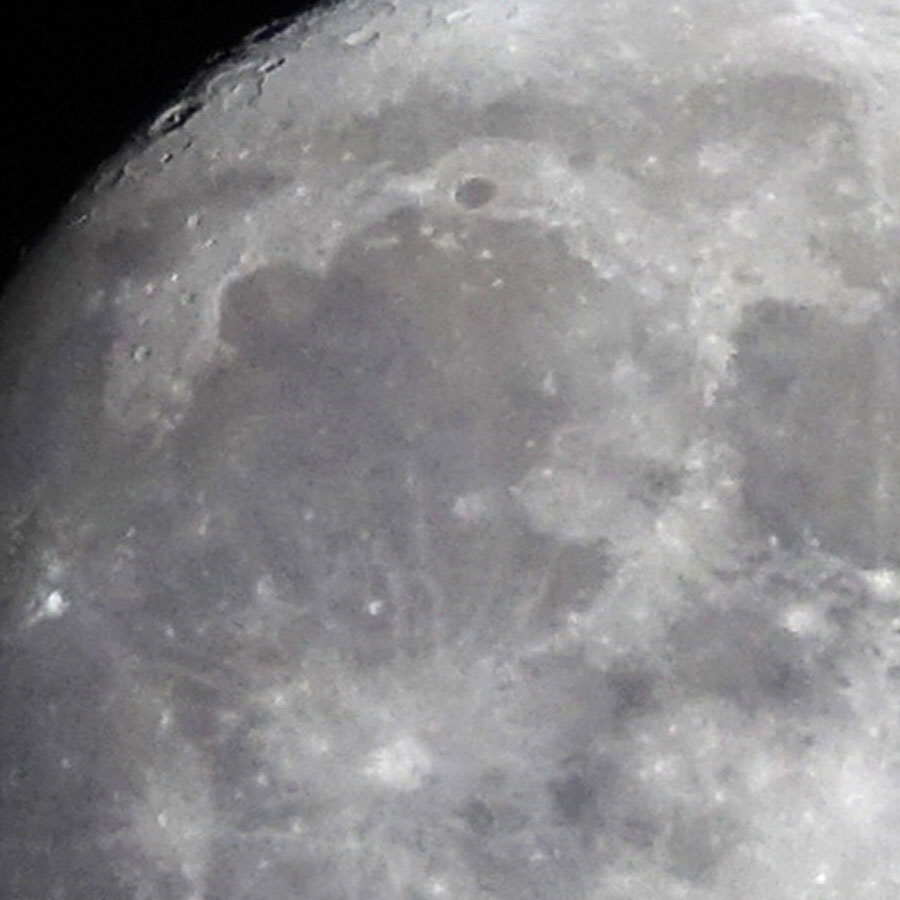 |
|
2000 Pixel - Clear Image Zoom, 1200 mm |
|
2000 Pixel - optical zoom, 600 mm |
 |
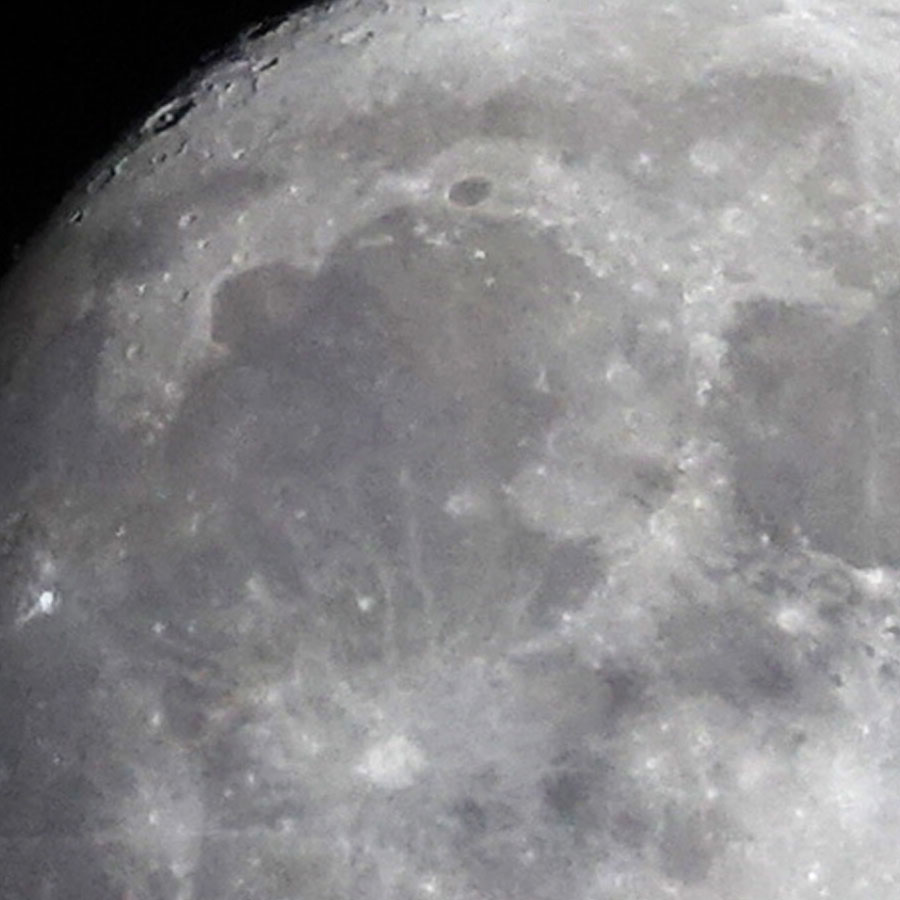 |
|
2000 Pixel - Clear Image Zoom, 1200 mm |
|
2000 Pixel - optical zoom, 600 mm |
I have to admit that both versions are quite similar. So you might make life more comfortable for yourself and use the Clear Image Zoom.
But there are also arguments against using the Clear Image Zoom. When using the Clear Image Zoom, the autofocus only measures a "large field." This may not be a problem with a distant object at infinity, but in my opinion the autofocus in this case searches more for the target than with the optical zoom. In addition, exposure is also measured on the basis of this large field. But the moon by far does not fill this field, and so I had to correct the exposure with EV -3 to prevent overexposure. Actually, I would have had to correct the exposure even further, but this does not seem possible... With the optical zoom, however, I was able to use spot metering for the exposure and thus, arrived at darker photos. A better way would surely have been if I had exposed manually in both cases. Then the exposure would also not fluctuate as much as it did when I took these photos (also because these are freehand shots).
Conclusions
These photo series from December 20, 2018 taken with the Sony RX10 M3 show that it is possible to take pictures of the moon with this camera. But there is still a lot to improve with respect to my technique: ISO 100 and manual exposure should be used and the camera should be placed on a tripod and released with a remote shutter release.
Nevertheless, the results do not come close to those taken with a telescope, the fine details are missing here!
| 05.03.2019 |